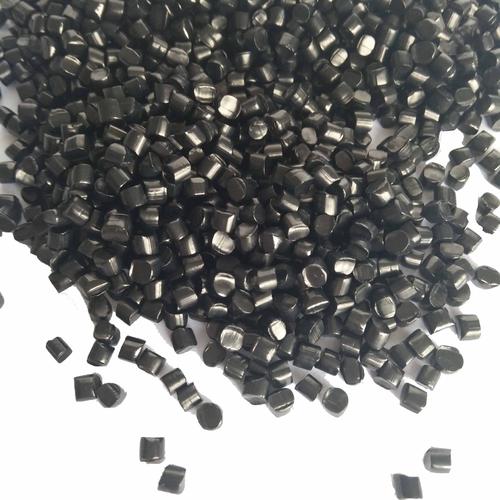The Function and Use of Carbon Black in Flame retardant Masterbatch
The carbon black of flame retardant masterbatch is a fine amorphous carbon powder mainly composed of carbon elements, which can be produced by incomplete incineration or thermal differentiation of organic compounds with high carbon content such as petroleum, natural gas, and fats. Carbon black can be divided into furnace process carbon black, tank process carbon black, hot cracking process carbon black, and acetylene carbon black due to different production methods. Adding acetylene black or conductive furnace black to plastic products such as PVC can reduce the external resistance of the product and have an anti-static effect. Carbon black is also a black colorant for plastics.
The conductivity of carbon black as a conductive filler is related to its specific surface area, structure, and surface chemical properties. And these fundamental properties and filling amount also have a decisive effect on the conductivity of composite materials.

The specific surface area is the sum of the outer surface area and the inner and outer surface (pore) area of carbon black particles. The larger the surface area, the smaller the scale of carbon black particles, the more particles per unit volume, and the simpler it is to touch each other to form a conductive network pathway, resulting in better conductivity. At the same filling amount, as the carbon black particle size increases, the electrical resistivity also increases. In conductive plastic products, carbon black particles are too small. Due to the low shear force after plastic plasticization, the dispersibility is poor, resulting in a decrease in the electrical and mechanical functions of the product. Therefore, it is necessary to control the particle size of carbon black within a certain range in order to obtain products with practical value. The dispersion of carbon black particle size also has a certain impact on the electrical function of composite materials. Carbon black particles with wide particle size distribution are more capable of imparting electrical functions to data than those with narrow particle size distribution. Widely dispersed carbon black has many particles in the same component, although the agglomerates slightly decrease in scale due to higher bulk density, the quantity is higher, and many agglomerates reduce the uniform void width and increase conductivity. The large aggregation and wide dispersion of carbon black can endow carbon black filled conductive plastics with better conductivity.
Article source: Taishan conductive masterbatch
http://www.incendiariastudio.com
-
04-11
Taishan conductive PP masterbatch: How to use defoaming masterbatch?
Defoaming masterbatch is suitable for enterprises that use PE and PP recycled plastics for product production. The trace amount of moisture contained in raw materials has a very serious impact on the
-
11-13
Characteristics and uses of conductive masterbatch plastics
Characteristics and uses of conductive masterbatch plastics1、 Characteristics of conductive masterbatch plastics:① Most plastics are lightweight, chemically stable, and will not rust;② Good impact res
-
10-13
What is PP talc powder masterbatch
What is the masterbatch of PP talc powder?PP talc powder masterbatch is a plastic modified filler, mainly composed of talc powder, which is a particle mixed with polymers or other carriers. It is main
-
08-09
Taishan Conductive Cloud Masterbatch Manufacturer Tells You Why to Use Conductive and Anti static Engineering Plastics
1. The fundamental physical properties of static electricity are:(1) Attracting or excluding;(2) There is a potential difference with the earth;(3) Discharge current will occur.These three characteris

